Quickstart: Create an Automation account using the Azure portal
You can create an Azure Automation account using the Azure portal, a browser-based user interface allowing access to a number of resources. One Automation account can manage resources across all regions and subscriptions for a given tenant. This Quickstart guides you in creating an Automation account.
Prerequisites
An Azure account with an active subscription. Create an account for free.
Create Automation account
Sign in to the Azure portal.
From the top menu, select + Create a resource.
Under Categories, select IT & Management Tools, and then select Automation.
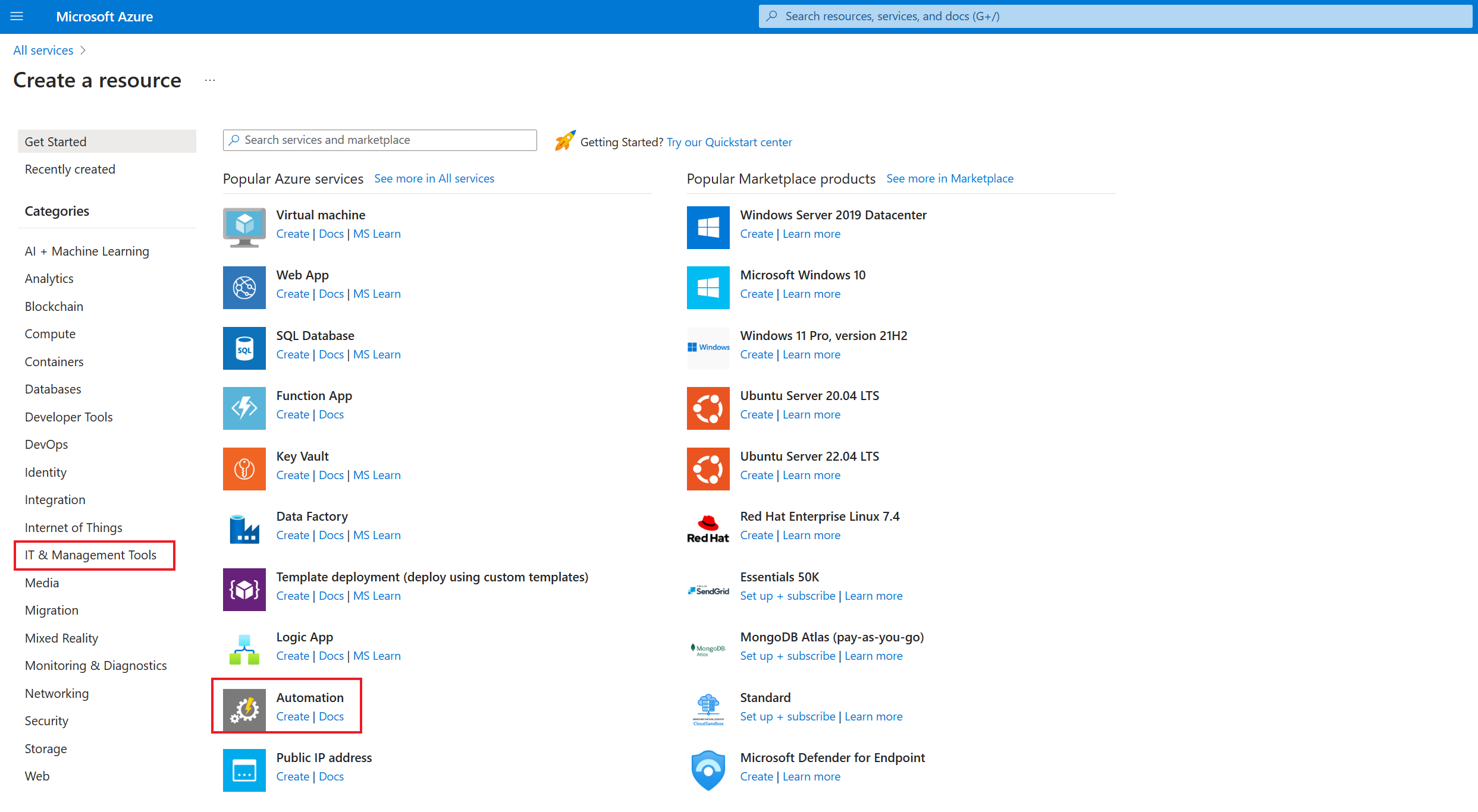
Options for your new Automation account are organized into tabs in the Create an Automation Account page. The following sections describe each of the tabs and their options.
Basics
On the Basics tab, provide the essential information for your Automation account. After you complete the Basics tab, you can choose to further customize your new Automation account by setting options on the other tabs, or you can select Review + create to accept the default options and proceed to validate and create the account.
Note
By default, a system-assigned managed identity is enabled for the Automation account.
The following table describes the fields on the Basics tab.
| Field | Required or optional |
Description |
|---|---|---|
| Subscription | Required | From the drop-down list, select the Azure subscription for the account. |
| Resource group | Required | From the drop-down list, select your existing resource group, or select Create new. |
| Automation account name | Required | Enter a name unique for its location and resource group. Names for Automation accounts that have been deleted might not be immediately available. You can't change the account name once it has been entered in the user interface. |
| Region | Required | From the drop-down list, select a region for the account. For an updated list of locations that you can deploy an Automation account to, see Products available by region. |
The following image shows a standard configuration for a new Automation account.
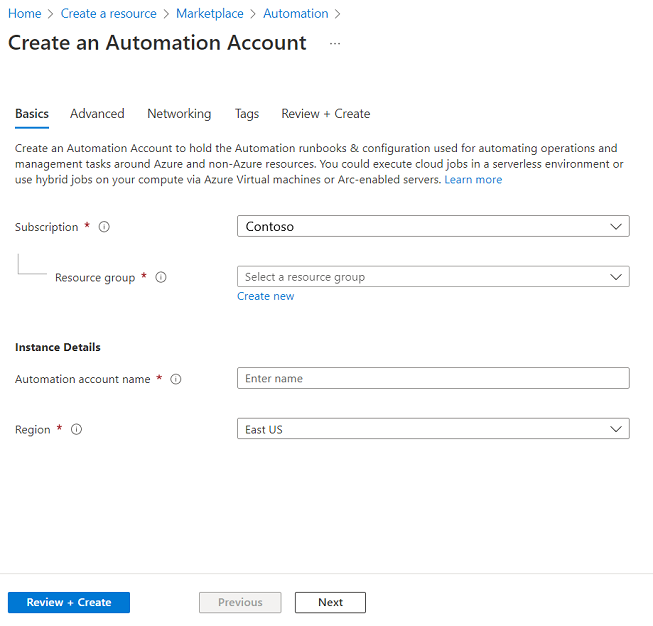
Advanced
On the Advanced tab, you can configure the managed identity option for your new Automation account. The user-assigned managed identity option can also be configured after the Automation account is created.
For instructions on how to create a user-assigned managed identity, see Create a user-assigned managed identity.
The following table describes the fields on the Advanced tab.
| Field | Required or optional |
Description |
|---|---|---|
| System-assigned | Optional | A Microsoft Entra identity that is tied to the lifecycle of the Automation account. |
| User-assigned | Optional | A managed identity represented as a standalone Azure resource that is managed separately from the resources that use it. |
You can choose to enable managed identities later, and the Automation account is created without one. To enable a managed identity after the account is created, see Enable managed identity. If you select both options, for the user-assigned identity, select the Add user assigned identities option. On the Select user assigned managed identity page, select a subscription and add one or more user-assigned identities created in that subscription to assign to the Automation account.
The following image shows a standard configuration for a new Automation account.
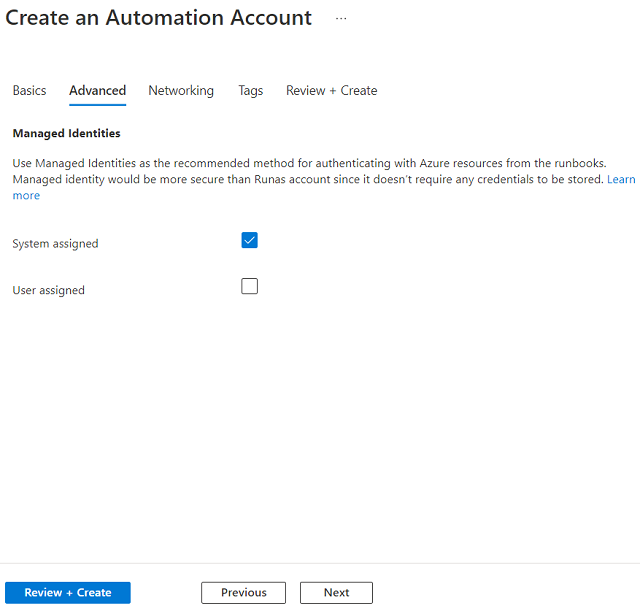
Networking
On the Networking tab, you can connect to your automation account either publicly (via public IP addresses), or privately, using a private endpoint. The following image shows the connectivity configuration that you can define for a new automation account.
Public Access – This default option provides a public endpoint for the Automation account that can receive traffic over the internet and does not require any additional configuration. However, we don't recommend it for private applications or secure environments. Instead, the second option Private access, a private Link mentioned below can be leveraged to restrict access to automation endpoints only from authorized virtual networks. Public access can simultaneously coexist with the private endpoint enabled on the Automation account. If you select public access while creating the Automation account, you can add a Private endpoint later from the Networking blade of the Automation Account.
Private Access – This option provides a private endpoint for the Automation account that uses a private IP address from your virtual network. This network interface connects you privately and securely to the Automation account. You bring the service into your virtual network by enabling a private endpoint. This is the recommended configuration from a security point of view; however, this requires you to configure Hybrid Runbook Worker connected to an Azure virtual network & currently does not support cloud jobs.
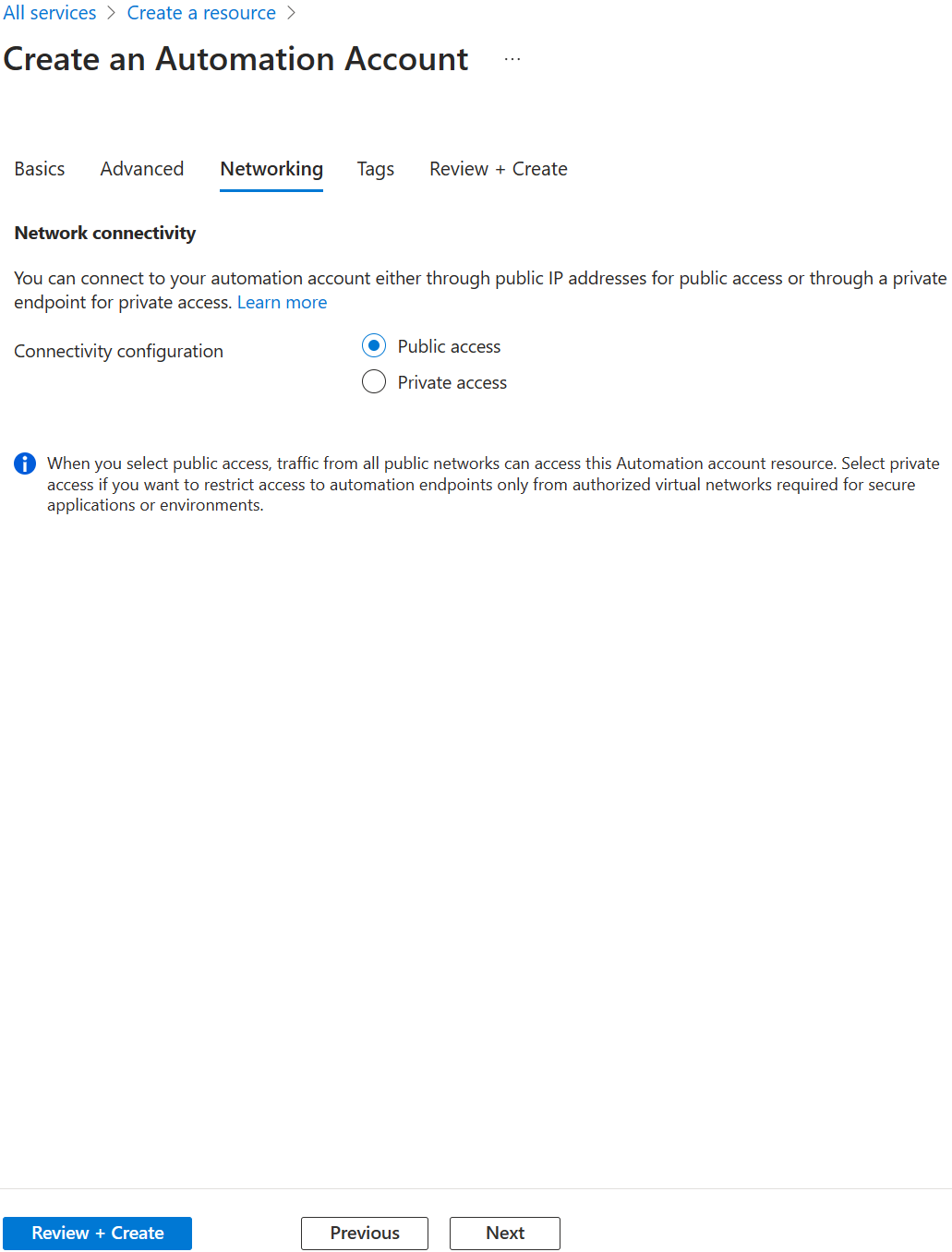
Tags
On the Tags tab, you can specify Resource Manager tags to help organize your Azure resources. For more information, see Tag resources, resource groups, and subscriptions for logical organization.
Review + create tab
When you navigate to the Review + create tab, Azure runs validation on the Automation account settings that you have chosen. If validation passes, you can proceed to create the Automation account.
If validation fails, then the portal indicates which settings need to be modified.
Review your new Automation account.
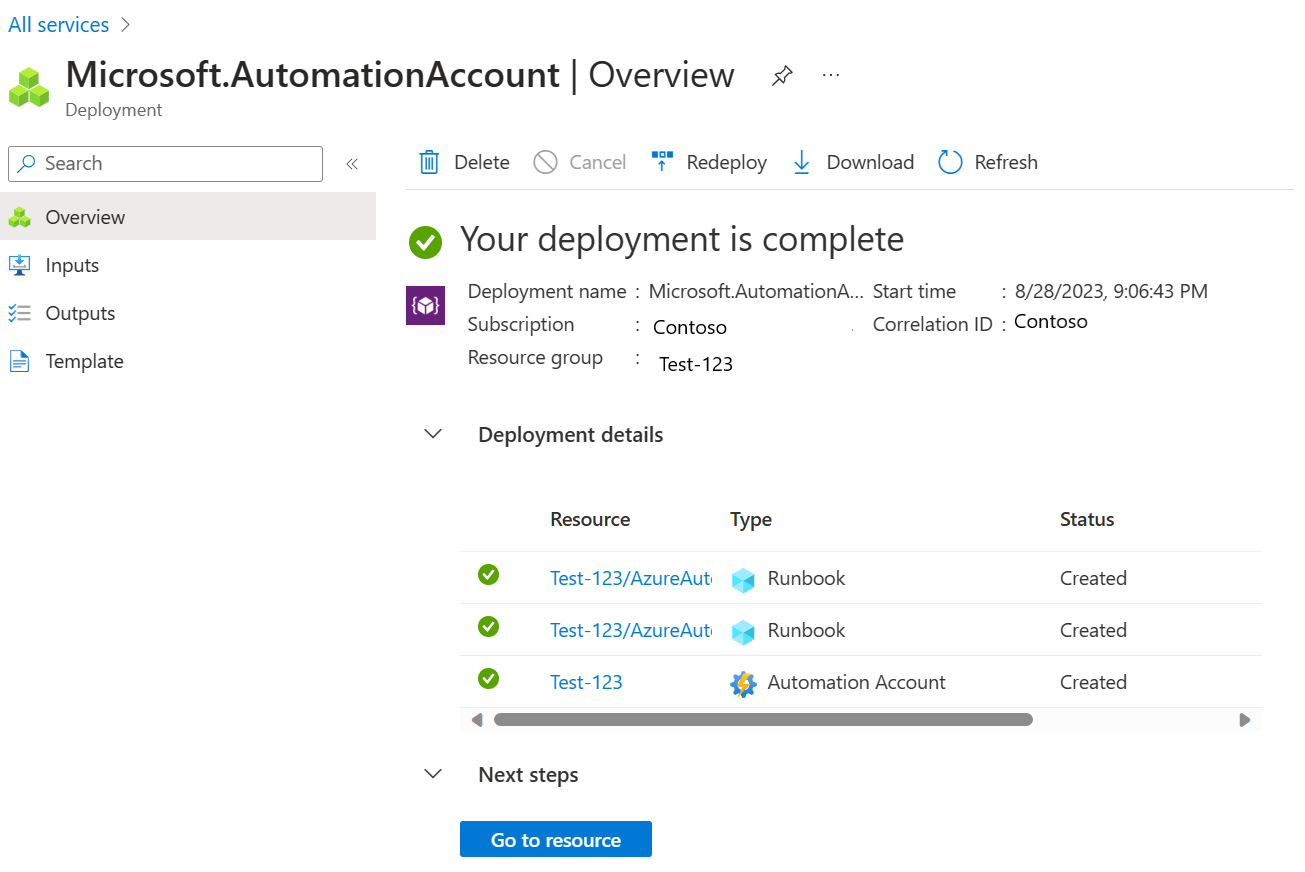
Clean up resources
If you're not going to continue to use the Automation account, select Delete from the Overview page, and then select Yes when prompted.
Next steps
In this Quickstart, you created an Automation account. To use managed identities with your Automation account, continue to the next Quickstart: